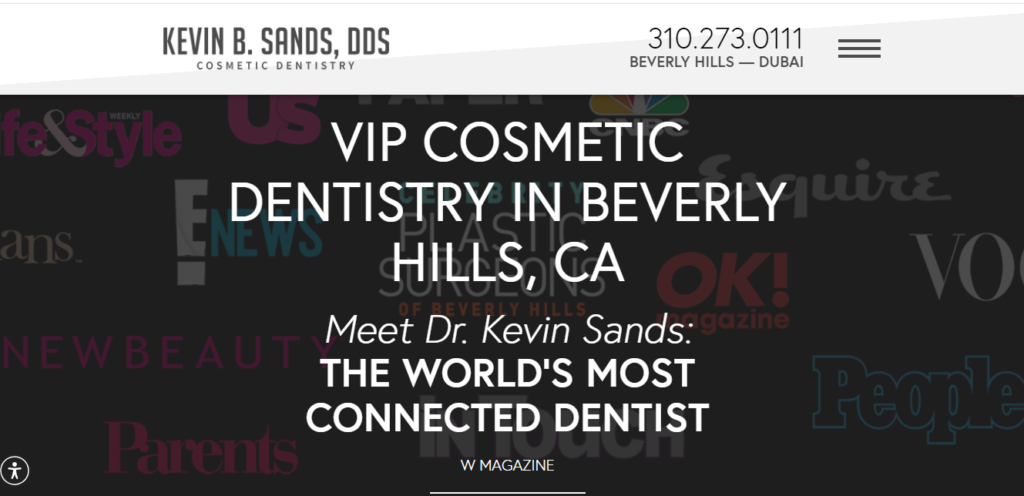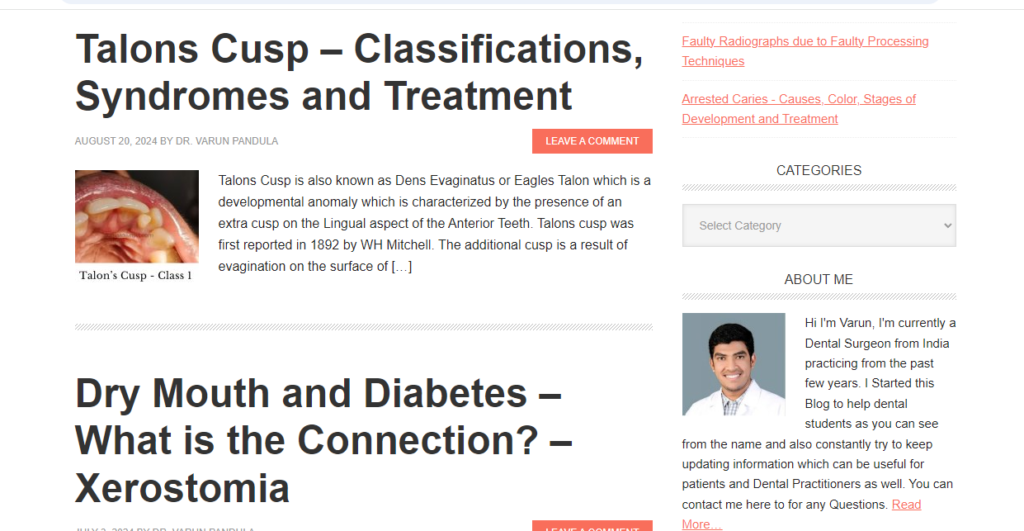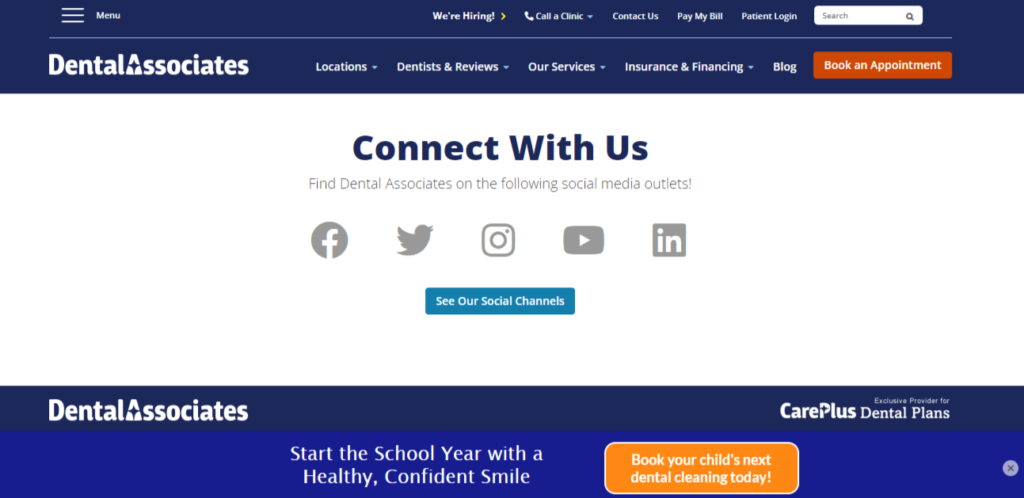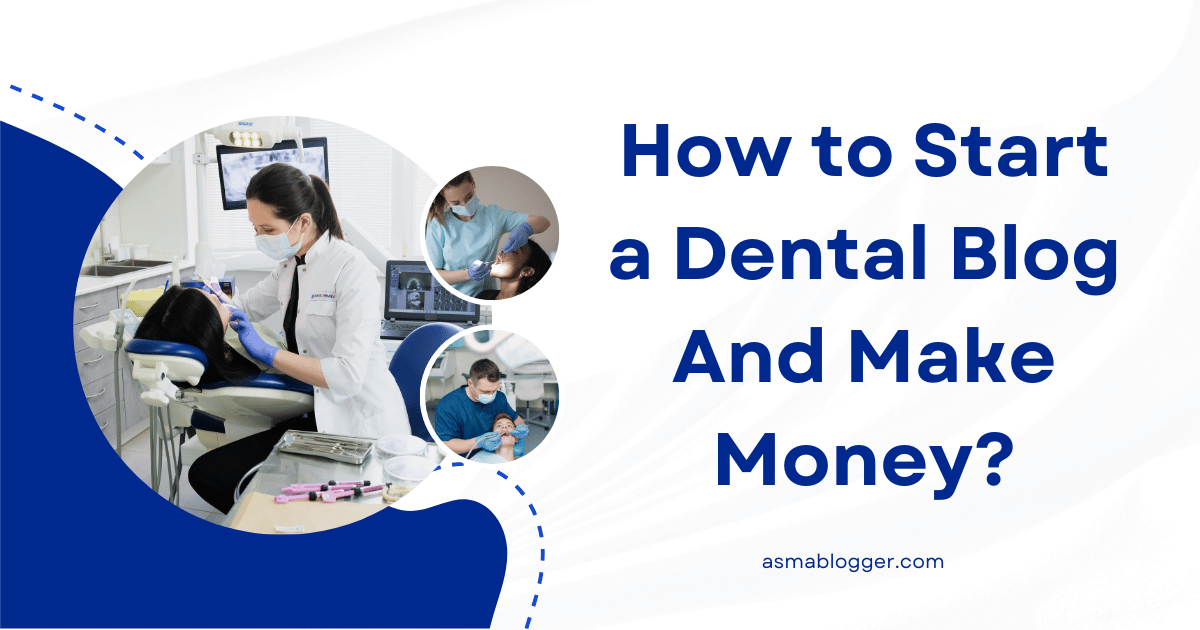Did you know that dental blogs can increase your practice’s visibility by up to 50%? Wow! If you’re looking to boost your online presence and connect with more patients, starting a dental blog is a game-changer. In this guide, I’ll walk you through how to start a dental blog from scratch. I’ll cover everything you need to know to create content that engages your audience and builds your brand.
Table of Contents
ToggleFrom brainstorming topics to publishing your posts, you’ll be equipped with practical tips and insights. Ready to jump in? Let’s get started and make your dental blog shine!
Why Start a Dental Blog?
Thinking about starting a dental blog? It might seem like a lot of work, but trust me, it’s worth it. It’s a fantastic way to connect with your community and show off your expertise.
Benefits of Blogging for Dental Professionals
Blogging can seriously benefit your practice. It helps build trust, educates your patients, and even brings in new clients.
- Builds Trust: Patients feel they know you before visiting.
- Educates: Answer common questions and explain procedures.
- Attracts Patients: Good content can bring new faces to your practice.
The Growing Demand for Dental Content Online
There’s a huge demand for dental advice online. People are constantly searching for answers. If you’re not providing it, someone else will.
- Reliable Advice: Offer useful tips and clear answers.
- Stand Out: Early blogging helps you become a go-to resource.
How Blogging Can Boost SEO for Your Dental Practice
Blogging is also great for SEO. Use relevant keywords and local info to boost your Google ranking. This means more local patients finding you online.
- Use Keywords: Write about what your patients are searching for.
- Local SEO: Include your city to attract local searches.
- Internal Links: Link to your services to keep readers engaged.
Yes, blogging takes effort, but the payoff in patient engagement and visibility is worth it. Stick with it and you’ll see the benefits grow!

How to Start a Dental Blog: Step 1 – Choose the Right Niche for Your Dental Blog
Choosing the right niche for your dental blog can make a huge difference in how successful you are. It’s like finding your blog’s special place where it can truly shine.
Importance of Defining Your Audience
Knowing who you’re writing for is crucial. If you understand your audience’s needs, you can design your content to answer their burning questions and solve their problems.
- Specialize: Don’t try to cover every dental topic under the sun. Narrow your focus to something specific, like dental implants or bleeding gums.
- Stand Out: By zeroing in on a particular niche, you’ll stand out from the big guys who cover everything.
- Build Authority: Becoming an expert in one area boosts your blog’s credibility and attracts a dedicated audience.

Popular Dental Blog Niches
There are tons of niches within the dental world. For instance, focusing on areas like dental implants or oral surgery can help you stand out in a crowded field.
- Dental Implants: Share success stories, tips, and the latest trends.
- Bleeding Gums: Offer practical advice on causes and remedies.
- Cavities: Provide useful tips on prevention and treatment.
Choosing a focused niche helps you connect with readers and build a loyal following.
How to Start a Dental Blog: Step 2 – Conduct Keyword Research for Your Niche
Keyword research is like your map to finding what people are searching for. It helps you figure out which topics will drive traffic to your blog.
- Brainstorm Keywords: Start with phrases like “dental implants cost” or “bleeding gums remedies.” These help you understand what people are searching for.
- Use Tools: SEMrush, Ahrefs, or similar tools can show you search volume and competition. This helps you choose the right keywords.
- Answer Common Questions: Think about what questions your patients ask. Create content that answers these questions to attract more readers.

Focusing on a specific niche and using targeted keywords will set your blog up for success.
How to Start a Dental Blog: Step 3 – Set Up Your Dental Blog
Alright, let’s get technical! Setting up your dental blog isn’t as complicated as it might seem, but there are a few steps that can make or break your future site. I’ve been through this process with many clients, and trust me—it’s worth doing it right from the start. Here’s how to get your blog up and running smoothly.
Select the Best Blogging Platform
I always recommend WordPress, and let me tell you why. It’s free, incredibly easy to use, and perfect for beginners (or even seasoned pros like me!). Plus, WordPress is built with SEO in mind, which means your dental blog has a better chance of ranking higher on search engines.
Why WordPress?
- Ease of use: Even if you’re not a tech whiz, you’ll get the hang of it quickly.
- SEO-Friendly: WordPress helps optimize your content with clean code and easy-to-manage SEO tools.
- Mobile Responsive: Your patients are likely browsing on their phones, and WordPress makes it easy to keep your blog looking sharp on any device.
- Customizable: With a ton of themes and plugins, you can make your blog unique without needing to learn any coding.

I’ve set up dozens of blogs, and trust me, WordPress always delivers. It’s constantly being updated by a global community, so you can count on it to stay secure and up-to-date. Plus, if you ever run into a roadblock, the support community is massive—someone out there has already dealt with whatever issue you’re facing.
Choose a Domain Name
Now, picking a domain name can be tricky. You want something memorable but also flexible. My advice? Stick to something related to your practice, like DrMikeDentist.com or DentalHub.com. Avoid super specific names like DentalCavities.com—that’ll box you in. What happens if you want to talk about more than just cavities? Exactly, you’re stuck.
A good tip is to keep it short and easy to spell. You’ll be saying it over the phone and writing it in emails a lot more than you think! Use a domain finder through your hosting provider to check if it’s available.
Set Up Hosting and Blog Essentials
Once you’ve got your domain, it’s time to set up hosting. I’ve used Hostinger and Bluehost for my own and clients’ blogs. They’re both affordable, reliable, and easy to manage.
- Hostinger is great if you’re looking for top-notch performance on a budget. They offer a free domain, 24/7 support, and SSD storage (which basically means faster loading times). Plus, there’s a 30-day money-back guarantee if you decide it’s not for you.
- Bluehost is another solid choice, especially if you’re new to this. They’ve got a super easy control panel and premium SSL (for securing your site), and they’ll even throw in a free CDN (Content Delivery Network) to make your site load faster.
Whichever you pick, just make sure you look for 99.9% uptime (basically how often your site will be accessible) and good customer support. Trust me, those “why isn’t this working?” moments are inevitable, and having someone you can chat with 24/7 is a lifesaver.
Finally, don’t forget the blog essentials—a clean, professional theme, must-have plugins (like Yoast for SEO and a good security plugin), and setting up your Google Analytics and Google Search Console accounts so you can track your blog’s performance from day one. Feels like a lot? It is, but once it’s set up, you’re golden.
How to Start a Dental Blog: Step 4 – Create High-Quality Dental Blog Content
When creating content for your dental blog, the quality of what you share makes or breaks your success. Let’s dive into how you can make your posts stand out.
Identify Your Core Content Pillars
Think of your blog’s core content pillars as the main themes or topics you’ll consistently cover. This helps in building a solid foundation for your blog.
- Choose Your Topics: Pick a few key areas, like dental implants or oral hygiene, that you’ll focus on. This helps you become known for specific topics.
- Be Consistent: Regularly update these topics to keep your audience engaged. It’s like creating a series that your readers can look forward to.
- Research Competitors: Check out what others are doing. Not to copy, but to see what works and what doesn’t. SEMrush can be a great tool for this.
Write Patient-Friendly Blog Posts
Your posts should be easy to read and understand. If you’re using complex jargon or long paragraphs, your readers might lose interest quickly.
- Keep It Simple: Use straightforward language. Your goal is to inform, not to confuse.
- Engaging Tips: Share practical advice that patients can easily apply. For example, “Try flossing before bed to reduce gum inflammation.”
- Break Up Text: Large chunks of text can be overwhelming. Use bullet points or short paragraphs to make your posts more digestible.
Related Post: Content-Centric SEO: A Comprehensive Guide
Use Visuals for Better Engagement
Visuals can make your content much more engaging. With platforms like Instagram and Pinterest showcasing the power of images, your blog should follow suit.
- Incorporate Infographics: Bright, colorful infographics can highlight key facts or tips. For instance, an infographic on brushing techniques can be informative and visually appealing.
- Add Photos and Videos: Including relevant images or videos can keep readers interested. Remember, a well-placed photo or video can break up text and add value.

- Use ALT Tags: Don’t forget to add descriptive ALT tags to your images. This helps with SEO and accessibility, making sure your content is seen and understood by all.
By focusing on these areas, you’ll not only create high-quality content but also keep your readers coming back for more. Keep experimenting with different formats and topics, and watch your blog grow!
How to Start a Dental Blog: Step 5 – Optimize Your Dental Blog for SEO
Over time, I learned that optimizing for SEO is like setting up a solid foundation for your house—it makes a big difference.
On-Page SEO Best Practices
So, let’s talk about on-page SEO. This is the stuff you do directly on your blog to help it rank better. First off, you’ve got to use relevant keywords throughout your post. Keywords should be in your title and subheadings and sprinkled naturally throughout the content.
- Use Clear Titles: Titles should be catchy but also include primary keywords. This helps both readers and search engines understand what your post is about.
- Add Subheadings: These are more than just organizational tools—they help with SEO too. Subheadings break up your content and make it easier for readers to skim. Plus, they give search engines a better idea of what’s in your post.
I found that incorporating internal and outbound links also boosts your SEO. Link to other pages on your site and reputable external sources. It’s like building a web of information that search engines and your readers can follow.

Keyword Research and Optimization
Keyword research can be a real game-changer. I used to guess keywords, but then I started using tools like SEMrush and Ahrefs. They help you find out what your potential patients are searching for. Here’s how to nail it:
- Do Your Homework: Use keyword tools to find terms people are typing into Google. Look for terms with high search volume but low competition.
- Place Keywords Strategically: Include your chosen keywords in the title, in the first 100 words of your post, and throughout the content. But don’t overdo it—keyword stuffing can hurt more than help.
Oh, and don’t forget to update your posts with fresh keywords regularly. I once let a post sit too long, and its relevance dropped. Keeping up with trends ensures your content stays relevant.
Local SEO for Dental Blogs
If you’re a local dentist, local SEO is crucial. You want to be the top result when someone searches for a dentist in your area. Here’s what I’ve learned:
- Claim Your Google My Business Listing: Make sure your practice is listed with up-to-date information. Add photos and ask satisfied patients to leave reviews.
- Use Local Keywords: Incorporate phrases like “dentist in [Your City]” in your blog posts and meta descriptions. This helps search engines match your content with local searches.
Following these tips will set your dental blog up for SEO success. It’s not just about writing good content; it’s about making sure that content gets seen. If you’re not sure where to start, just think of SEO as a way to make your blog easier for both readers and search engines to find. And remember, keep experimenting and adjusting—SEO is an ongoing process.
Related Post: How to Build a Blog Following? Expert Tips
How to Start a Dental Blog: Step 6 – Promote Your Dental Blog to Grow Readership
Social Media Promotion
Social media is an absolute game-changer when it comes to blog promotion. The key here is consistency. I’ve found that just tossing up a blog link once won’t cut it—you have to engage and re-share in creative ways.
- Instagram: Use before-and-after pics or quick dental tips.
- Facebook: Share full blog posts and create discussions.
- Twitter: Post snippets of advice with a link to the blog.
I also realized that engaging with your audience helps boost visibility. Ask questions, encourage comments, and follow up. People love feeling like their input matters.

Related Post: How to Promote Your Blog Without Social Media: Tested Strategies
Build and Engage an Email List
When I started, I didn’t pay much attention to email marketing, but honestly, it’s one of the most direct ways to reach your readers. A simple sign-up form on your blog works wonders, but you need to offer something in return—think free guides or exclusive tips.
- Offer a Freebie: A guide like “Top 5 Mistakes People Make When Brushing.”
- Send Regular Updates: Short, valuable emails that keep readers coming back. Weekly or bi-weekly works fine—just don’t spam them.
Trust me, emails can build a loyal following faster than you’d think.
Collaborate with Other Dental Professionals
This part was a bit frustrating at first, I won’t lie. It took me a while to get a response from other professionals. But once you get even one collaboration going, it pays off big time.
- Guest Blogging: Offer to write posts for each other’s blogs.
- Joint Webinars or Social Media Lives: Talk about trending dental issues together.
It’s honestly so rewarding to connect with others in your field—you’ll boost your credibility and expand your reach.
How to Start a Dental Blog: Step 7 – Track Success: Analyze and Improve Your Blog
Use Analytics to Monitor Your Blog’s Performance
When I first set up Google Analytics, it was a bit overwhelming. All those graphs and numbers? They seemed like a mess. But once I took some time to learn what each metric meant, it became super valuable.
- Tip: Watch the bounce rate. If people leave your page quickly, it might need a tweak.
Identify High-Performing Content
Sometimes, an old post suddenly gets a lot of traffic. I once had a blog post on dental hygiene that took off unexpectedly. I refreshed it with updated info and new images, and it performed even better!
- Pro Tip: Use Google Search Console to see which posts are getting clicks. Update and promote those.

Regularly Update Content for SEO and Relevance
You don’t always need to write new posts. Updating old content can be just as effective. I updated a post with new data and links, and it boosted traffic significantly.
- Pro Tip: Refresh older posts every few months. Add current stats and fix any broken links. Google will notice!
Key Takeaways
Starting a dental blog is a powerful way to improve your practice’s visibility and engage with your community. By creating designed, high-quality content and utilizing effective SEO strategies, you can attract more patients and establish your authority. It’s crucial to focus on ethical practices and provide reliable information. Customize your blog to address your specific audience’s needs and stay updated with industry trends.
If you have insights or personal experiences about dental blogging, please share them in the comments below. Your contributions could offer valuable guidance to others embarking on their blogging journey!
General Inquiries
What is a dental blog?
A dental blog is a website where dentists share advice, tips, and updates about dental health. It’s like a friendly chat where you get to learn about brushing techniques, dental treatments, and the latest in oral care. Think of it as your go-to spot for all things teeth!
How do I publish a dental article?
Publishing a dental article is pretty straightforward. Write your content, make sure it’s clear and engaging, and then choose a platform—like a dental blog or a professional journal. Don’t forget to proofread and use images or infographics to make your article pop!
How do I advertise myself as a dentist?
To advertise yourself as a dentist, start with a strong online presence. Create a professional website and a blog where you share dental tips and success stories. Use social media to connect with your community and showcase your expertise. Consistent, helpful content can set you apart!















